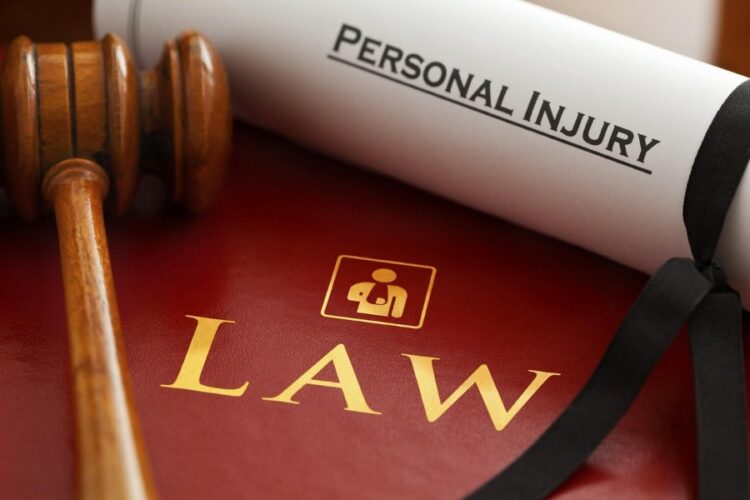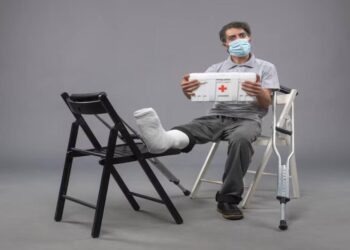Each morning brings its own set of responsibilities, and you go about your day doing all the chores. Be it driving the car, going to the office, or maybe buying a product. This sounds very normal, right?
Well, it is undoubtedly a general routine until you meet a fateful event. It can be anything, such as you slip on a wet floor, get rear-ended at a stoplight, or end up with a medical bill for something your doctor missed.
In short, life has a way of throwing curveballs, and unfortunately, some of them hurt. That’s where personal injury law steps in. It’s a way for people to seek compensation when they’ve been hurt because of another party’s negligence.
But what actually falls under the umbrella of “personal injury”? The term sounds pretty broad, but the law defines specific categories that cover the most common situations. Having said that, this quick guide breaks down four common types of personal injury cases.
Dive in!
Motorcycle Accidents
Let’s start with the big one. Motor vehicle accidents are one of the most common causes of personal injury claims. As some reports state, a person is six times likely to suffer a fatal injury in a motorcycle accident than in a car accident. According to the experts at Wyly law firm, one can face the given injuries due to it:
- Road rash,
- Broken bones,
- Traumatic brain injuries,
- Neck and spinal injuries,
- Abdominal injuries,
- Burns, etc.
In such circumstances, personal injury law helps victims pursue compensation. This is particularly applicable when someone else was at fault. That entity may involve the following:
- Another driver,
- A rideshare operator,
- Even a local government, if poor road conditions played a role.
However, if anyone faces such an accident, they must seek the help of experienced and knowledgeable attorneys immediately. They help individuals understand whether what happened qualifies for compensation and what steps to take next. Moreover, they provide you with a rounded legal strategy for your claims.
Medical Malpractice
We trust doctors to help us get better. But when something goes wrong, the consequences can be devastating. To make it clear, medical malpractice refers to situations where a healthcare provider makes a mistake that causes harm. This could include:
- A misdiagnosis or delayed diagnosis,
- Surgical errors,
- Medication mix-ups,
- Birth injuries.
It’s important to know that just because some treatments do not work doesn’t mean malpractice occurred. But if a doctor fails to meet a reasonable standard of care, and that failure leads to harm, you may have grounds for a case.
If anyone has doubts regarding the malpractice, they can connect with specialized attorneys. Such experts properly evaluate their case and find out if it was due to the doctor’s ignorance.
Product Liability
Have you ever used a product that malfunctioned and caused harm? It may happen sometimes, and that is where product liability comes into play. These cases arise when a defective or dangerous product injures a consumer. There are typically three types of defects involved:
- Design defects – This refers to a product that was flawed from the start.
- Manufacturing defects – It conveys that something went wrong during production.
- Failure to warn – It points out missing instructions or safety warnings.
Cases involving unsafe medical devices, contaminated baby formula, or defective car parts are just a few examples of real-world issues. In such scenarios, product liability laws hold manufacturers, distributors, and retailers accountable when their negligence puts consumers at risk.
Slip and Fall Accidents
Slipping on a wet floor in a grocery store might seem like bad luck, right? But in many cases, it’s also legally actionable. Slip and fall claims fall under a category called premises liability. These cases deal with injuries caused by unsafe property conditions, such as:
- Uneven sidewalks.
- Poor lighting in stairwells.
- Wet or greasy floors.
- Loose handrails.
If a property owner fails to keep their space reasonably safe, and someone gets hurt as a result, they may be held responsible. These cases are especially common in retail spaces, apartment buildings, and restaurants.
Wrapping Up!
Accidents and injuries can change lives in the blink of an eye. But if someone else’s mistake led to your suffering, you don’t have to face it alone. Understanding the types of personal injury cases helps you recognize when professional legal assistance may be necessary.
Ultimately, from car crashes to defective products, knowing your rights is the first step toward protecting them. And with the right guidance, you can ensure that your voice is heard and your recovery is supported.










